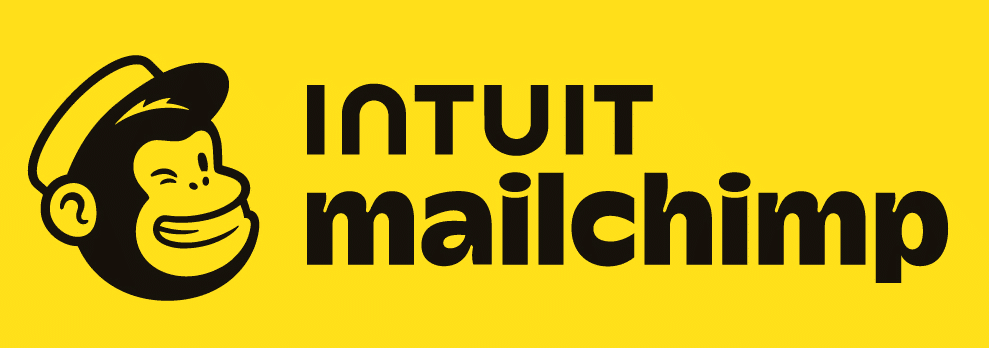Mailchimp has come a long way from its humble beginnings as that email tool with the chimp mascot. If you haven’t looked at the platform in a few years, you might be surprised by what it’s become.
Since Intuit acquired Mailchimp in 2021, the platform has transformed into a sophisticated marketing powerhouse that punches well above its weight class. We’re talking AI that actually writes your email content for you, predictive analytics that identify which customers are most likely to buy, and automation that generates 9x more revenue than sending one-off campaigns manually.
The real game-changer? You don’t need a marketing degree to use any of it. While enterprise-level businesses spend six figures on marketing automation platforms and hire teams to run them, small business owners can now access similar capabilities for as little as $20 per month. Whether you’re running an online store, consulting practice, or service-based business, Mailchimp’s newest features level the playing field in ways that simply weren’t possible even two years ago.
Key Features
Built around accessibility for non-marketers while offering sophisticated tools for experienced users, Mailchimp provides four plans scaling from hobbyists to enterprise operations.
Plans and Pricing
All paid plans include a 30-day free trial.
Free ($0/month): Up to 500 contacts and 1,000 monthly email sends with basic features and Mailchimp branding on emails.
Essentials ($13/month): Starts at $13 monthly for 500 contacts, scaling to $45/month for 2,500 contacts and supporting up to 50,000 contacts. Removes branding, includes 10x send limit, A/B testing, and 24/7 support.
Standard ($20/month): Starting at $20 monthly for 500 contacts, about $60/month for 2,500 contacts, scaling to 100,000 contacts. Includes 12x send cap, advanced segmentation, Marketing Automation Flows, predictive analytics delivering 2x more revenue, and enhanced reporting.
Premium ($350/month): Starts at $350 monthly for 10,000 contacts, supporting up to 200,000 contacts. Features 15x send cap, unlimited users, priority phone support, and dedicated onboarding.
Revolutionary AI and Automation
Mailchimp’s current AI capabilities fundamentally change how businesses create marketing content. The AI content generator drafts compelling email copy based on your business description and campaign goals, dramatically reducing the time spent on email creation. The system learns your brand voice and adapts suggestions accordingly.
Marketing Automation Flows generate 9x more revenue compared to one-off campaigns, according to Mailchimp’s data from January 2023 to January 2025. Users can choose pre-built sequences for common scenarios like abandoned cart recovery, welcome series, or re-engagement campaigns, then customize them with conditional logic and branching paths. Businesses report 8x more orders from automated campaigns compared to manual sends.
The platform now offers behavioral targeting that triggers emails based on specific in-app activities, website visits, or shopping behaviors. For Shopify users specifically, new segment conditions track products viewed, items added to cart, and search queries submitted, enabling hyper-personalized campaigns that respond to real-time customer intent.
Enhanced E-Commerce Integration
The deepened Shopify integration pulls richer data including browsing history, cart abandonment timing, and purchase patterns. This feeds predictive segments that identify customers most likely to make repeat purchases.
Combined with SMS marketing capabilities, businesses create omnichannel campaigns reaching customers via email and text without overlap. SMS is available as an add-on starting around $20 per 25,000 messages in select markets. Users report 97% higher click rates combining email and SMS versus email alone.
Reporting and Attribution
Enhanced analytics provide clarity on what drives revenue. Improved attribution tracking shows which channels and messages lead to conversions, with customizable attribution windows. Revenue attribution now includes email opens and SMS delivery interactions for a complete performance picture.
Conversion insights identify where customers drop off in the buying journey, while audience analytics reveal where new customers originate, letting you focus spending on successful channels.
Email Builder and Design Tools
The New Builder offers improved functionality with mobile display controls, letting you choose whether columns stack or retain desktop layouts. A drag bar adjusts column widths freely, while built-in stock images eliminate separate design tools. Popup forms capture visitor information for email and SMS lists with automatic tagging for immediate segmentation.
Advantages
Best-in-Class User ExperienceMailchimp’s interface remains unmatched for intuitiveness. The drag-and-drop editor makes email creation accessible to beginners, while power users appreciate custom HTML templates and API access.
AI That Actually Saves TimeMailchimp’s content generation delivers tangible time savings. The system understands marketing best practices and creates emails that convert, not just generic filler text.
Powerful E-Commerce CapabilitiesThe Shopify integration alone justifies the platform for online retailers. Automated abandoned cart sequences, product recommendations, and post-purchase follow-ups maximize customer lifetime value. Standard plan users see 24x return on investment according to Mailchimp’s data.
Comprehensive EcosystemWith 750+ third-party integrations, Mailchimp connects to virtually every business tool including Salesforce, WordPress, and most payment processors.
Disadvantages
Pricing EscalationWhile the free plan provides a genuine on-ramp, costs climb steeply as contact lists grow. A business with 10,000 contacts pays approximately $150/month for Standard or $350/month for Premium. The pricing model penalizes businesses with large but less-engaged lists, as you pay for total contacts stored, not just active subscribers.
Feature Limitations by TierCritical capabilities remain locked behind higher tiers. Predictive segmentation requires Standard or Premium. Phone support or more than five users? Premium only. The Essentials plan offers barely more functionality than the free tier despite monthly costs.
List Management FrictionSiloed audiences create complications. Contacts in multiple audiences count multiple times toward your limit and billing, effectively multiplying costs if you organize subscribers differently.
Learning Curve for Advanced FeaturesWhile basic email sending is straightforward, mastering automation workflows and segmentation requires significant learning investment. Many users report needing weeks or months to fully leverage advanced capabilities.
Final Word
Mailchimp represents the gold standard for businesses prioritizing ease of use without becoming email marketing experts. The AI features genuinely save time and improve campaign performance, while the enhanced Shopify integration makes it nearly essential for e-commerce businesses.
The free plan offers a legitimate way for startups to begin email marketing with zero financial commitment. The Standard plan delivers enterprise-level capabilities at mid-market prices for businesses under 10,000 contacts, with automation generating 9x revenue compared to one-off campaigns.
For service-based businesses, e-commerce stores, consultants, and small-to-medium retailers who want professional email marketing without hiring a specialist, Mailchimp remains the safe choice. The time savings from AI content generation and revenue lift from automated campaigns typically justify subscription costs within the first few months.
























